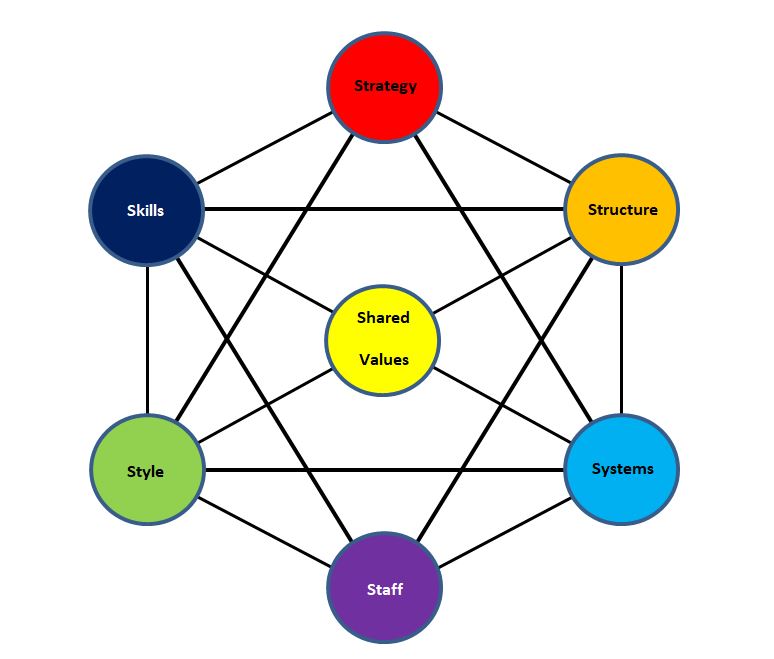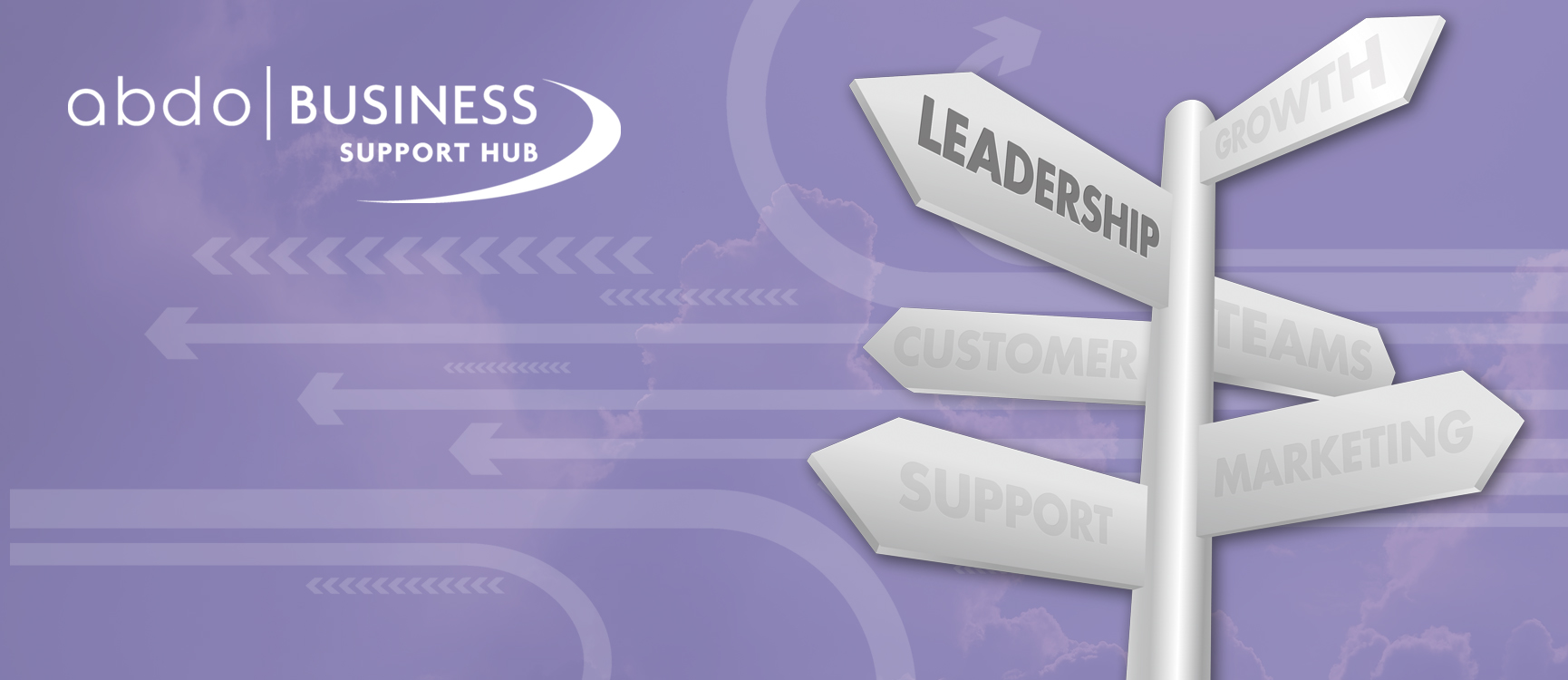Are you working in your business or working on your business?
When reviewing your business, whether as a manager or as a business owner, it is sometimes overwhelming as you try to decide what information is important and why. You may use your business review to decide the direction of the business for the next 12 months or even as part of a three or five year plan. Read on to discover the tools and models which could help you.
McKinsey 7S framework
The McKinsey 7S Framework is a management model developed by business consultants Robert H. Waterman, Jr. and Tom Peters in the 1980s. This can be used to analyse the effectiveness of teams within a business as well as the impact of change.
The goal of the model was to show how 7 elements – Structure, Strategy, Skills, Staff, Style, Systems and Shared values -can be aligned together to achieve effectiveness in a business. The key point of the model is that all the seven areas are interconnected and a change in one area requires change in the rest of a business for it to function effectively.

The 7S Framework is mainly used to trace performance problems in a business to subsequently change and/or improve these. It is important in this process to compare the present situation with the desired future situation. The 7S Framework constitutes a good framework in which gaps between present and desired future situations can be traced and adjusted.
The model can be applied to many situations and is a valuable tool when organisational design is in question. Common uses of the framework include:
- Facilitate organisational change.
- Help implement new strategy.
- Identify how each area may need to change in future.
In the McKinsey model, the seven areas of organization are divided into ‘soft’ and ‘hard’ areas.
Strategy, structure and systems are hard elements that are much easier to identify and manage when compared to soft elements.
Soft areas, although harder to manage, are the foundation of the organization and are more likely to create the sustained competitive advantage.

Strategy
Strategy is the plan developed by a business to seek competitive advantage in a particular market. A robust strategy is one that is clearly articulated, is long-term, helps attain competitive advantage and is reinforced by strong vision, values and mission. By using mission and vision the organisation’s objectives become clear.
But it’s hard to tell if such strategy is well-aligned with other elements when analysed alone. So the key in the 7S model is not to look at your business to find the great strategy, structure, systems and etc, but to look if it is aligned with other elements.
Structure
Structure represents how the organisation is structured and which hierarchical layers are there, the way business departments and divisions are organised. This includes the information of who is accountable to whom. In other words, structure is the organisational chart of the business. It is also one of the most visible and easy to change elements of the framework.
Systems
Systems are the area of the business that determines how business is done and it should be the main focus for managers/business owners during organisational change. Systems are all formal and informal methods of operation, procedures and communication flows. They are the business and technical infrastructure that employees use on a daily basis to accomplish their aims and goals.
Skills
These concern both the skills of the organisation and those of the employees and the ability the business’ employees to perform well. They also include capabilities and competences.
During organisational change, the question often arises of what skills the business will need to reinforce its new strategy or new structure.
Staff
This soft element is about the employees, their competences and job descriptions.
It is concerned with what type of and how many employees a business may need and how they will be recruited, trained, motivated and rewarded.
Style
Style is the management style of the business’ leaders.
It represents the way the business is managed by the senior team, how they interact, what actions they take and their value.
Shared Values
Shared Values are at the core of the McKinsey 7s model.
They represent the standards and values and other forms of ethics within an organisation in which vision, corporate culture and identity are the key elements.
They are the norms and standards that guide employee behaviour and company actions and thus, are the foundation of every organisation.
Using the 7S framework
- Identifying the areas that are not currently aligned – look at the 7S elements and identify if they are effectively aligned with each other. You will ideally already be aware of how the 7 elements are aligned in your business. Look for the gaps, inconsistencies and weaknesses between the relationships of the elements.
- Determining your optimal organisation design – along with other members of your senior team, establish what effective organisational design you want to achieve.
By knowing the desired outcome you can set your goals and make the action plans much easier. This step is not as straightforward as identifying how the 7Ss are currently aligned in your business. You may need to do research and benchmarking to find out how other similar businesses coped with organisational changes and what organisational designs they are using.
- Deciding where and what changes should be made – basically, create your action plan. This will detail the areas you want to realign and how will achieve this.
- Implementing the necessary changes – arguably the most important stage is to have well implemented change. Do you have the right people already in your business to facilitate this? If not, you may need to look to bring in consultants to do this.
- Continuously review the 7Ss – change in one element always has effects on the other elements and requires implementing new organisational design. Continuous review of each area is very important.
Useful weblinks:
whittblog.wordpress.com/2011/04/24/mckinsey-7s-model-a-strategic-assessment-and-alignment-model/
Change management workshop
Join us on Tuesday 12 April 2022 for a change management workshop.
Download here.

